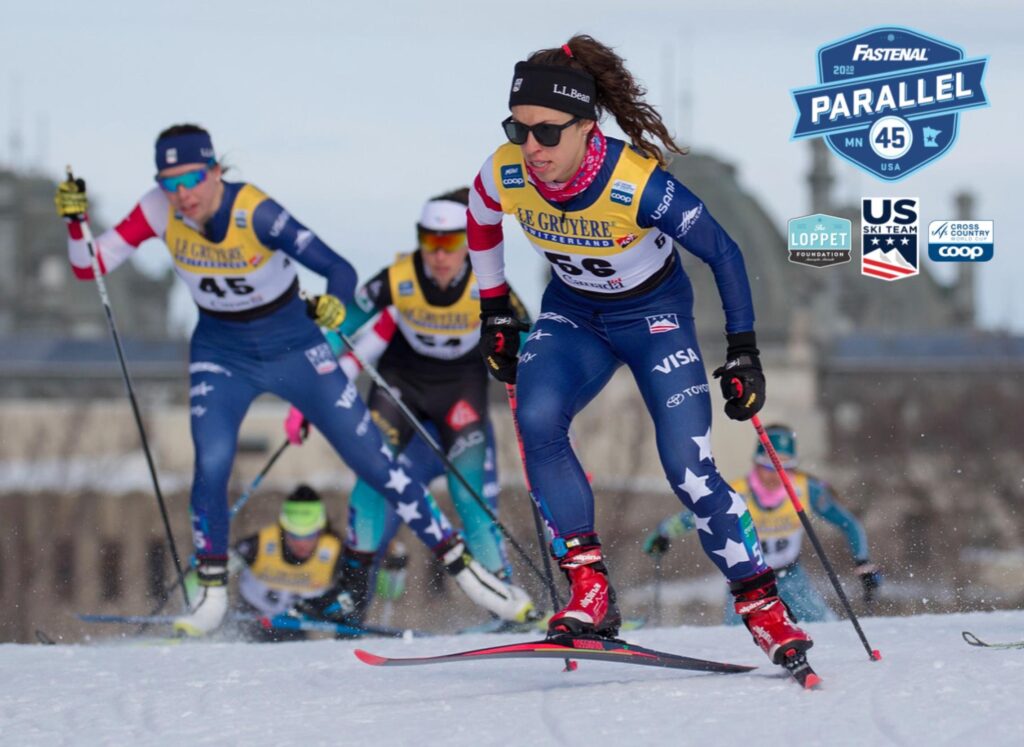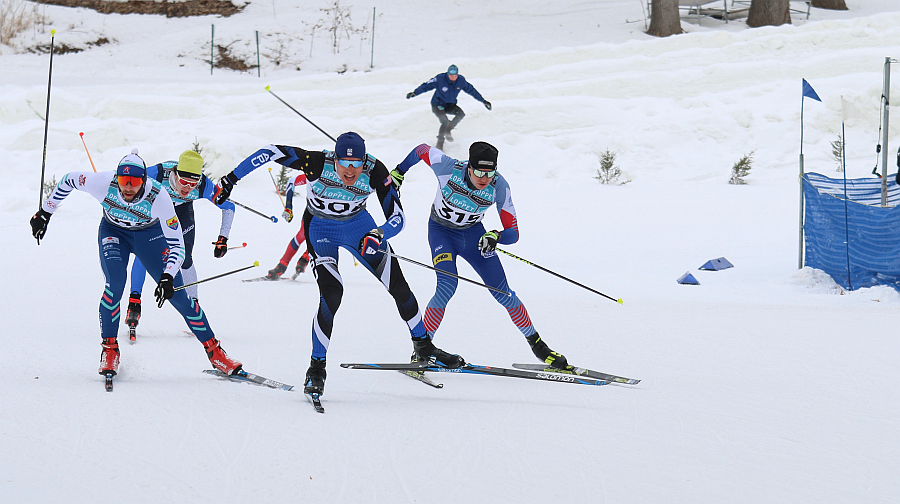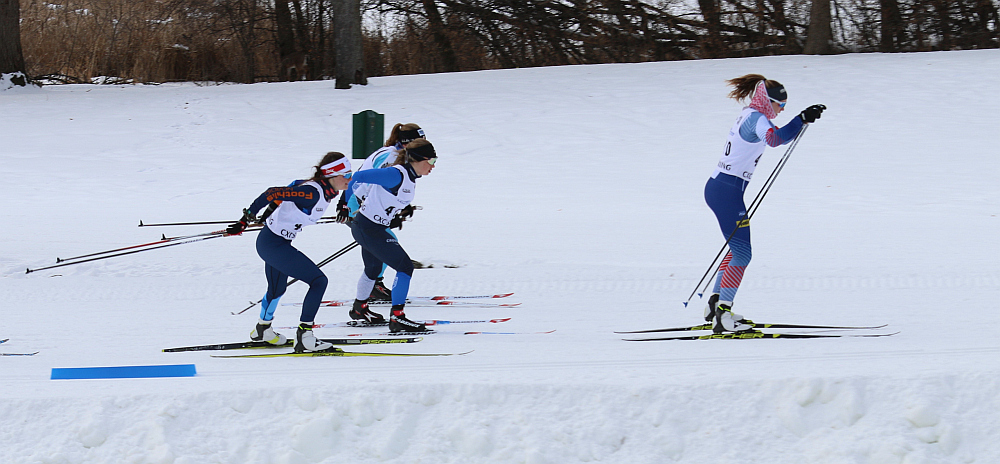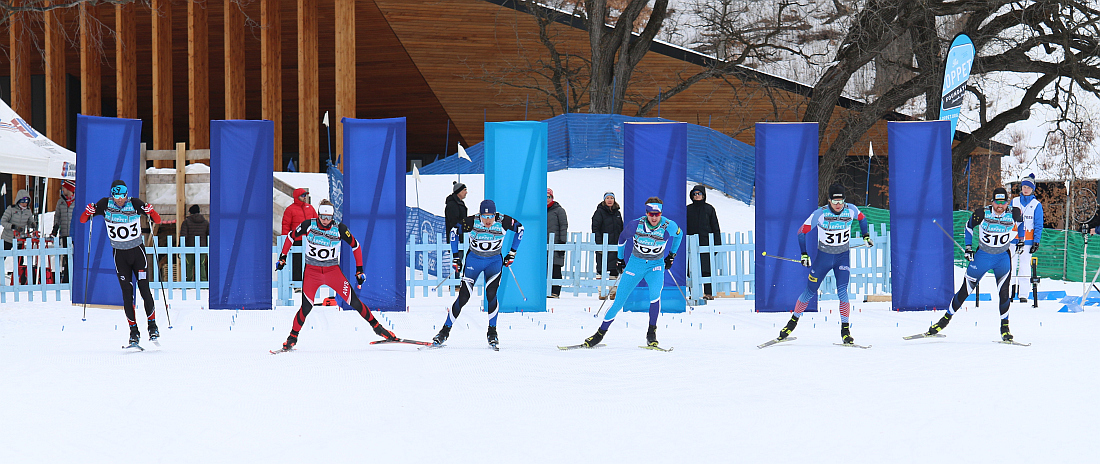News & Stories
Minnesotan, Olympian Rosie Frankowski explains MN World Cup Qualification
by Rosie Frankowski, 2018 Olympian from Minneapolis and current World Cup skier
Continuing with the discussion on World Cup start position qualifications, the criteria for the Minnesota World Cup (the third and final event in the Sprint Tour) works a bit different than the objective and discretionary system I explained in World Cup Starts 101. The U.S. and Canadian teams will receive more start positions due to Nation’s Group quotas, and the nature of the event as a sprint tour (three sprint races from March 14th-17th), will change up who starts the races.

Qualification for American Athletes
First off, who will qualify? Similar to the World Cup criteria for the rest of the season, US Ski & Snowboard sets forth the Guidelines. There is a tiered list of qualifications, and start positions will be awarded starting at the first criteria, down to the last, until all spots are filled. Both the U.S. women and men will have a maximum of 15 start sports per gender (including any athletes in the top 20 of the World Cup sprint standings and Supertour leader). The positions will be filled in this order:
- Athletes in the top 20 World Cup sprint standings (this start position literally has the athlete’s name on it and so belongs solely to that athlete and cannot be filled by someone else) based on standings after March 4th (the date of the Drammen World Cup: last European sprint World Cup). “Standings” refers to their position on the World Cup sprint points list which aligns with the sum of their scored World Cup sprint points all season, so is separate from the FIS point rankings, or US Ski and Snowboard rankings based on USSA points. World Cup points are awarded to the top 30 finishers in any World Cup race (World Cup Rules, page 11).
- Athletes ranked in the top 50 in the World Cup sprint standings. Again, these athletes will be chosen based on how many World Cup sprint points they have scored over the course of the season, up until March 4th.
- Overall Supertour leaders (women and men) by February 23rd, including the American Birkebeiner, the final competition of the third period of the Supertour (the fourth and last period is Spring Nationals). Keep in mind this is the Continental Cup leader spot, mandated by FIS, which is why the qualification date of February 22nd is different than February 17th, and why it includes both distance and sprint points in its calculations.
- Any athletes finishing in the top-10 at the Under 23 World Championships, held this year in Oberwiesenthal, Germany, from February 28th-March 3rd, 2020. “Under 23” athletes are athletes aged 21-23 in the current year (birth years 1997 to 1999).
- Similarly, any athletes finishing in the top-10 at the World Junior Championships, which runs in conjunction with Under 23 Worlds, in Oberwiesenthal, Germany. Junior athletes are athletes under 20 years of age (anyone born in the year 2000 or later). The World Junior team from the U.S. is listed here.
- Finally, the criteria reads, “Should there be any remaining positions after the Objective and Discretionary selection has been applied…”, the remaining spots will go to athletes ranked highest on the FIS World Cup sprint standings (meaning not in the top 50, but still in the standings—thus at some point in the 2019-2020 season they scored World Cup sprint points), followed by the rankings on the Supertour Sprint Tour Qualification points list.
The Supertour Sprint Tour list is interesting because it takes the top 4 results out of the 6 sprint races from December 1st-February 17th. There is a Supertour classic sprint race in Cable, WI, on February 19th that will not be counted towards the Sprint Tour qualification. Likewise, since it only takes the top 4 results into consideration, the criteria allow athletes to miss a race or two due to illness, injury, or taking advantage of a World Cup start position.
So now that I have confused you enough with technical language and criteria, let me try to sort through what might have gone through different athletes’ minds when they planned out their season with the Minnesota World Cup qualification as a main goal.

The chance to race in your home country, for the first time in almost 20 years, is quite literally the chance of a lifetime; a huge thank you must go out to all of the people who are making the Minnesota World Cup a reality. This race series is a huge goal of many American athletes–the chance to race a World Cup on home soil. Outside of all of the technicalities of qualification, the spirit and passion of the athletes’ desire to proudly represent the U.S. at home is really inspiring.
Now, for an American athlete aiming to race at Wirth on March 17th, the plan of how to qualify likely began last spring. First, they needed to identify the realistic road to qualification, whether that meant World Cup starts or crushing the Supertour. Second, they needed to hone their skills and fitness to the circuit they were racing. For the World Cup road, scoring a World Cup point (top 30) is vital to qualification because it puts your name in the hat. If you can be in the top 20, or top 50, of the World Cup sprint standings, great! But even just getting your name on the board likely will go a long way (especially on the men’s side where fewer sprint racers have been cycling in and out of the World Cup). The hard thing about scoring a World Cup sprint point, other than the actual task of finishing top 30 in the World, is that you need to be on the World Cup to have the chance at points. And then for World Cup sprint events, the qualifier, the “pre-race” before the heats where you need to finish top 30 to move into the heats, is extremely important. On the World Cup, fractions of a second separate 30th from 31st, but 30th will finish with one World Cup point, and 31st, well, they might as well have finished 50th in terms of World Cup points. Therefore, it is important to focus your training around qualifiers and being ready to give it your best shot in the first 3-4 minute effort of the day.
So if a World Cup start position is unlikely for your season, it is more advantageous to focus on the Supertour qualification list: top 4 sprint races out of 6 sprint races. However, on the Supertour, the top sprinters who will likely head to Minnesota in March, need to focus on the qualifier, quarterfinals, semifinals, and finally, the final, in order to score the most Supertour points possible. A Supertour win is worth 30 points, second is 25 points, third 21 points, and so on (at U.S. Nationals all amounts double). You can win the qualifier by 10 seconds, but that won’t guarantee you the top finish at the end of the final. Therefore, your training might have looked a bit different, and you might see some “distance” skiers breaking into some of those top positions.
Of course, the more World Cup sprint points you have, the better, so the goal of any athlete is to ski as fast as possible the entire day—the qualifier and the heats. Making the heats on the World Cup guarantees you a sprint point, but I promise you no athlete heads into the heats feeling completely satisfied with a 30th position. Most World Cup athletes are gunning to that final heat (top 6), so they can place as well as they can on the day. Similarly, no Supertour athlete “paces” the qualifier—you gotta make sure you make it into those heats, so you send it from the beginning.
But what about the other criteria outside of the World Cup sprint standings, and the Supertour sprint list? Another route is to be the overall Supertour leader, which includes all races from the first Supertour in Canmore, Alberta, Canada, to the end of Supertour Period 3: the Birkie in Hayward, WI. The top male and female athlete on the overall Supertour list will have World Cup start positions for the FIS sprint tour (Quebec and Minneapolis), and World Cup Finals in Canmore, Alberta, the following weekend. This position offers more than start positions for just the FIS Sprint Tour, but is based off the entire season.

Another avenue to qualify is to finish top 10 at the Under 23 World Championships, or the World Junior Championships in the sprint. Of course, you have to be under 23 years of age, or under 20 years of age, to qualify for those teams. Qualification occurs at US Nationals, and is based on your finishes in your age category in each race. One caveat is that World Juniors’ qualification only includes the first sprint, and the two distance races (but specifically, the junior mass start, not the senior mass start). Under 23 Worlds includes all four races. Then you must finish in the top 10 at the Championships and you have a start for the FIS Sprint Tour. These younger athletes are a tier above the overall World Cup sprint standings, and the Supertour sprint list, so they will fill start positions before the position is offered to the athletes outside of the top 50 World Cup sprint standings, and the Supertour sprint list.
One last thing to consider is athletes who qualify, but might not start the Sprint Tour. The Sprint Tour starts with two sprints in Quebec City on March 14th and 15th, a travel day on the 16th, and the Minnesota World Cup on Tuesday. That is a lot of racing! For a sprinter, this is likely one of the big focuses of the season. For a distance racer, this tour might be a distraction from top results at World Cup Finals in Canmore, on Friday, March 20th-Sunday, March 22nd. World Cup Finals includes two distance races and a mixed-gender team relay. This World Cup season contains a lot of racing with two big tours: Tour de Ski, and FIS Tour 2020. If an athlete races the FIS Sprint Tour, and all three races at World Cup Finals, that is essentially another tour (6 races in 9 days), coupled with cross-country travel. Athletes with high goals in Canmore might decide to skip the Sprint Tour, thus opening spots to others further down the qualification list.
Hopefully this clarifies a bit who will be representing the U.S. at the MN World Cup this March, and gets you ready to cheer on the large American team!

Additional Information:
- Fastenal Parallel 45 Winter Festival (weekend-long festival in conjunction with the MN World Cup)
- Buy tickets to the Minnesota World Cup
- Fastenal Parallel 45 Festival Schedule of Events (March 14th-17th, 2020)
- Other races & athlete events open to the public during the Parallel 45 Festival